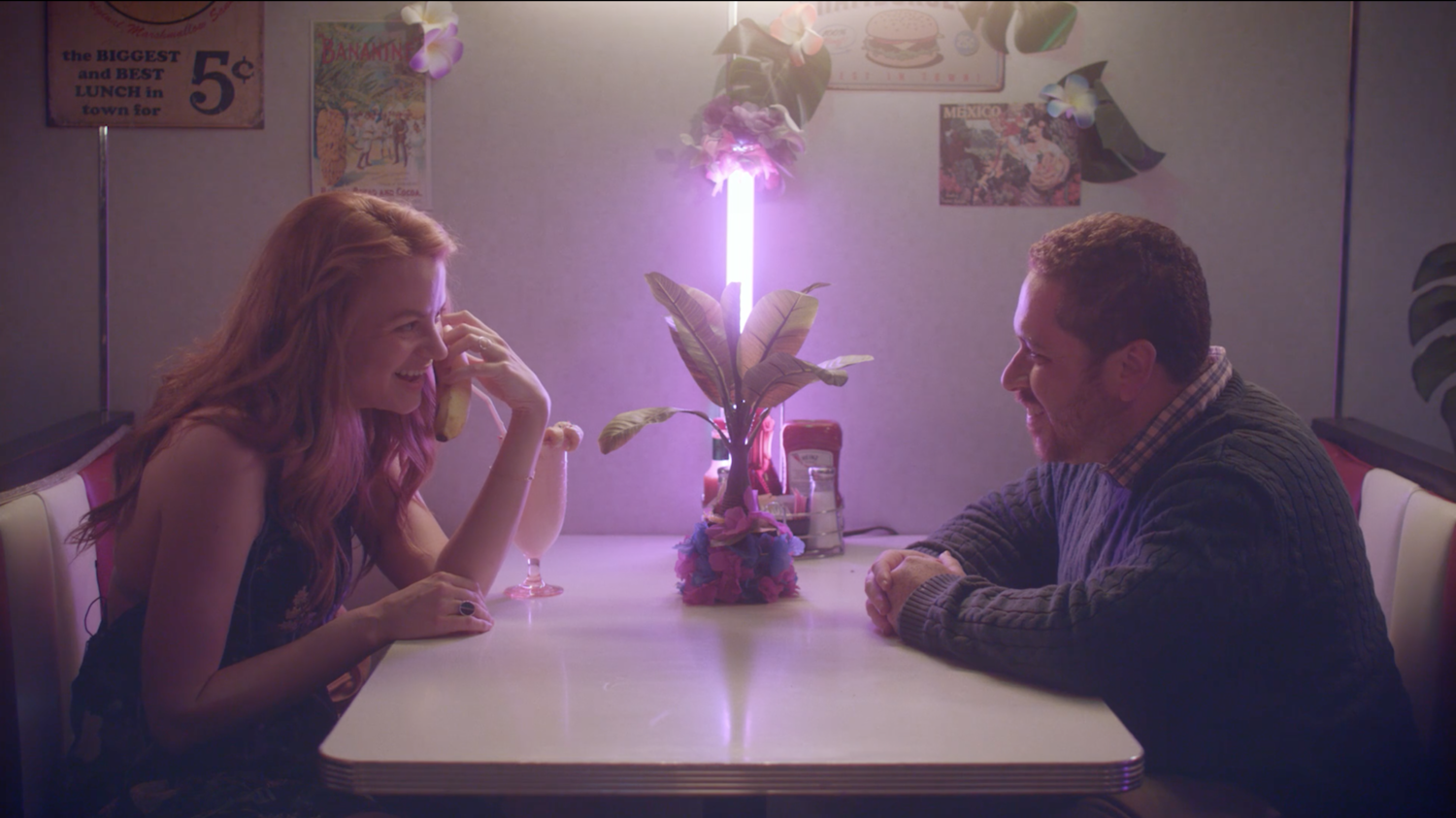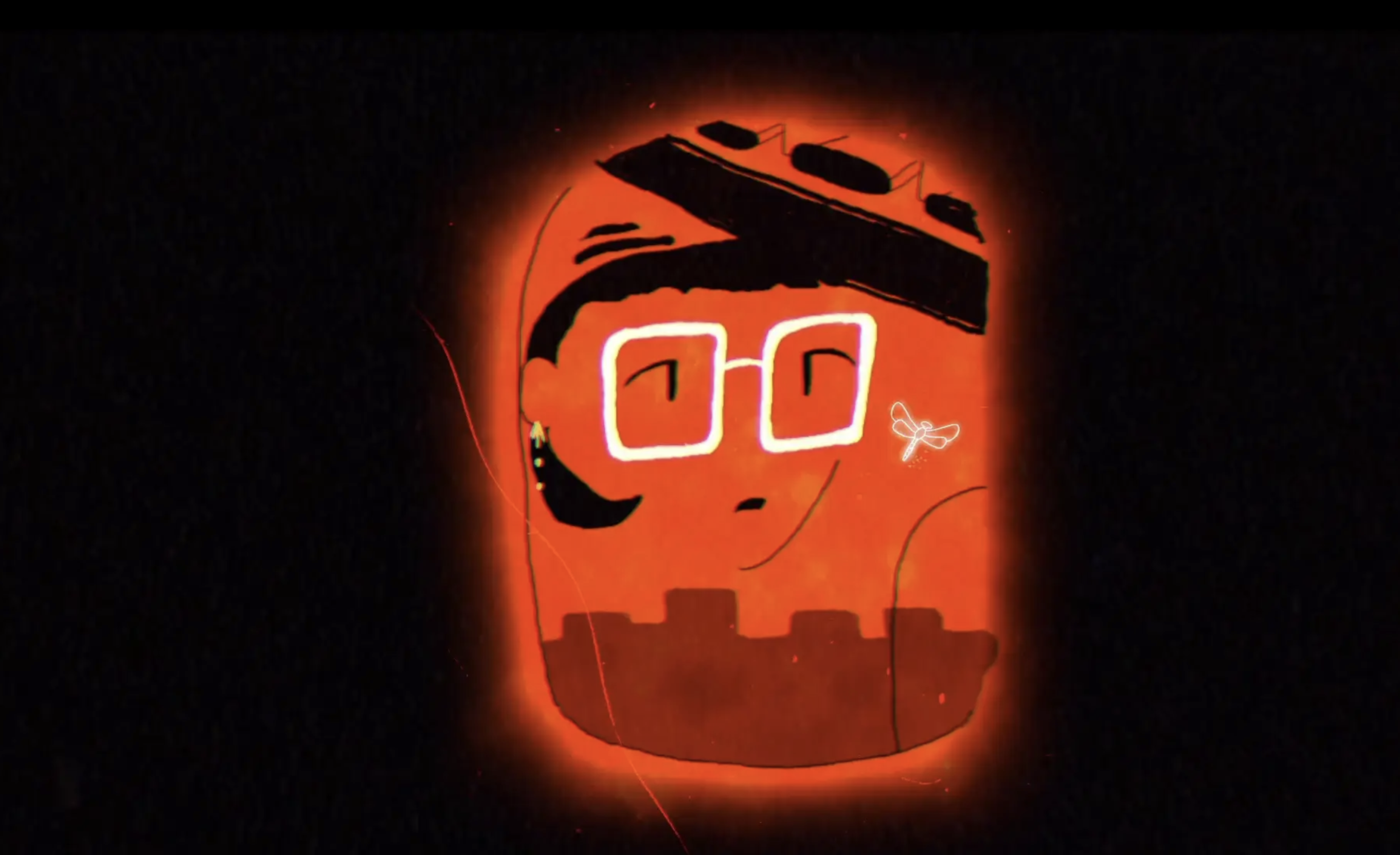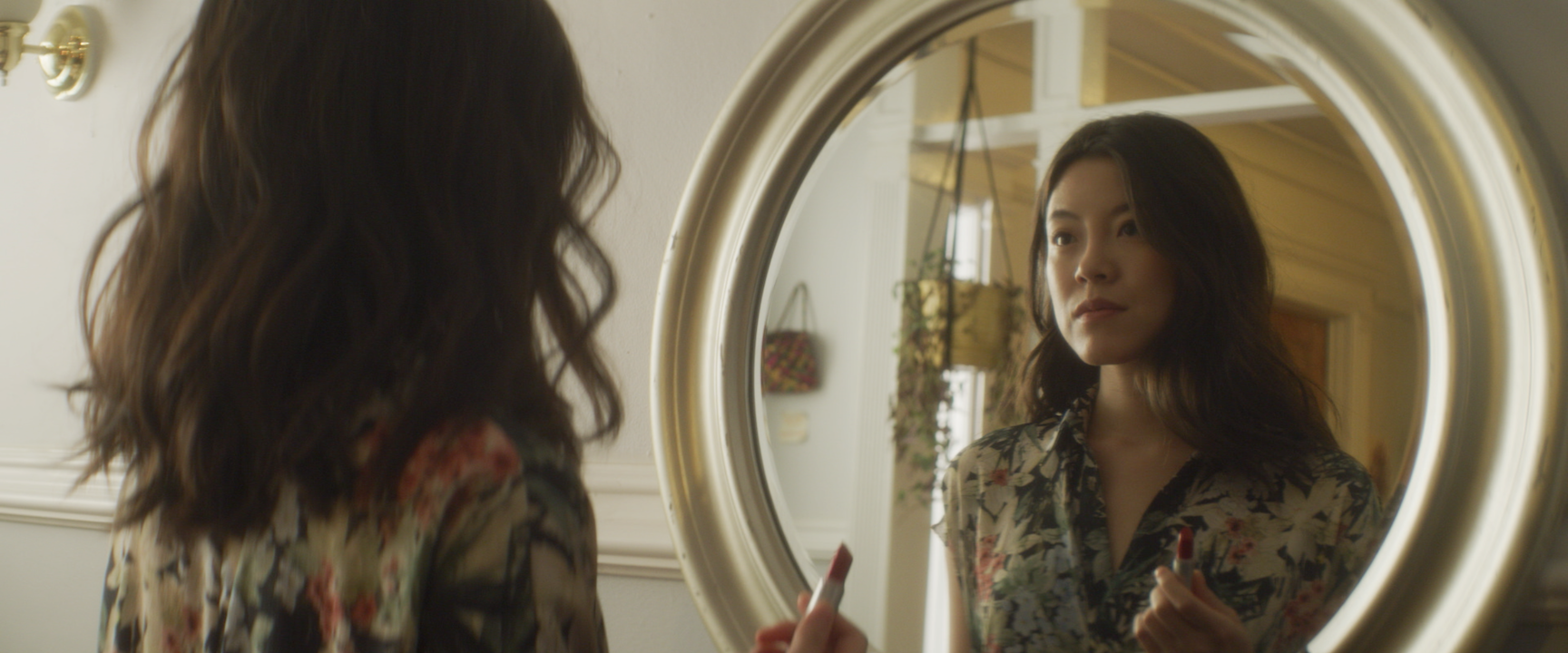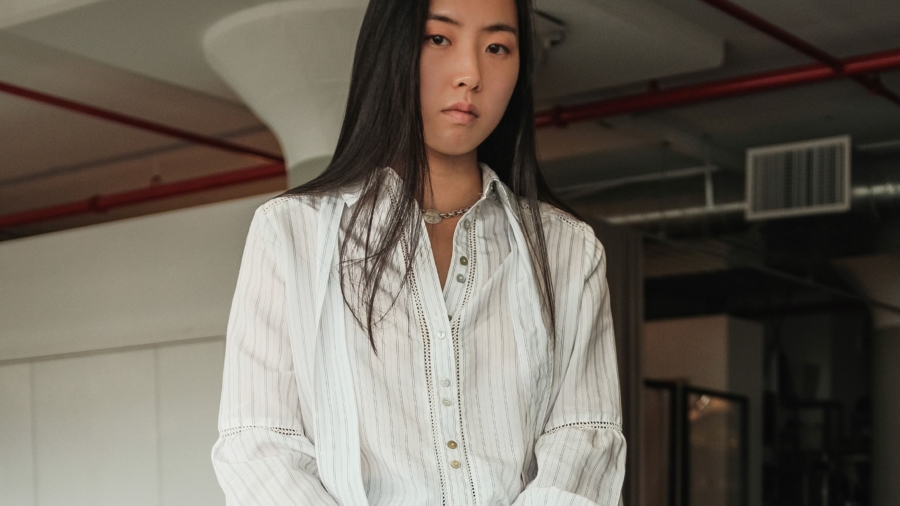Written by Tasnia Habib
A lonely man is spending an evening home alone, when the grocery bag rips and all the contents spill out onto the floor. As he struggles to pick up the food, the phone starts ringing. He picks up the phone – it’s a dial tone. The ringing continues. The camera zooms in on the groceries on the floor.
It’s the banana.
The opening scene to Grace Kim’s short film Loveseat presents this whimsical concept, but there is a larger meaning behind the humble banana phone.
“It’s a silly gimmick; he’s talking on a banana phone but could that be a representation of some larger longing or feeling displaced from the world and the desperation with which someone wants to feel connected to another human being?” asks Kim. The man continues to search for bananas in increasingly fantastical scenarios to recreate the initial connection. The absurdity highlights the man’s intense loneliness.
Grace Kim, a Korean-American writer-director based in Brooklyn and Los Angeles, uses absurdism and magical realism to explore loneliness and human connection in her films. Kim became interested in magical realism when she first started watching films in college. She cited Charlie Kaufman, Michel Gondry and Luis Buñuel as some of the first filmmakers that really piqued her interest.

Still from Grace Kim’s short Loveseat.
“What I liked about magical realism is that you’re kind of taking the world as it is but it’s slightly off kilter,” said Kim. “How can I make this world look the way it is now but something is just a little bit off.”
In her films, Kim uses magical realism to focus on mundane objects and portray a larger concept or idea about life. In An Interloper’s Kiss, the narrator waxes poetically about their love for the character as they watch her go about her daily life. The end of the film reveals that this love story is from the perspective of a fly.
“We can see a very sentimental love story from the perspective of this very non-sentimental, very unlovable thing,” said Kim. “I’m always trying to find that twisted perspective.”
Kim enjoys magical realism because it allows for stunning visuals that can only be portrayed in film. For her first film, Kim showed a friend a draft of the script she wrote which was of group of people having a conversation on the rooftop. The advice the friend gave her has stuck with her throughout her artist career.
“[He said] can you justify why this would have to be a film and not a podcast or a book? What are you bringing to the table visually that warrants that this should be a film? […] I can go outside right now and watch people get coffee or take a ride on the subway – but there are things that you can see on film that you’ll never be able to see in real life,” said Kim.
Kim’s interest in visual splendor is apparent in her work. The animated short Heart Tick Kaboom, commissioned by the Hartsfield-Jackson Atlanta International Airport, features a neon colored scheme and an eerie soundtrack of airport sounds. For some promotional videos for McDonalds, she uses a mix of animation elements and narration to create compelling stories. Kim has also directed several music videos, which she enjoys for the creative liberties she can take. “It’s an industry that rewards out of the box thinking and really lets you take visual risks,” said Kim.
As she progressed through her career, Kim has developed a sense of resilience in what can often be a difficult industry. “Honestly, I still feel like I haven’t hit my stride,” Kim confessed. “I think that’s common in this industry. There are lots of moments where you think ‘This is it! I’ve made it to the next stage!’ and you think it will be smooth sailing from there. But there is just as much resistance in the next stage as when you first started out. The only difference is that you’re more resilient and you know that you’ll get through it.”

Still from Grace Kim’s short Heart Tick Ka-Boom.
The coronavirus pandemic of the past two years has only empowered her to bolster this resilient attitude and work ethic. Although it was an extremely difficult period for artists and freelancers, Kim felt inspired by her community. “I really felt the resilience of the artist community and their willingness to come together, like that’s their first instinct. I don’t know if that’s true of other industries.”
The pandemic also forced Kim to re-frame her career and set boundaries. “For a long time I thought the hustle of the artist lifestyle was [an] all in one package, and when I took a step back I realized I’m allowed to say ‘no’ to some of these things. I’m allowed to have boundaries while I pursue something I really love.”
It’s a lesson that many of us – artists and non-artists alike – seem to have learned through months of lockdowns and social distancing. Along with these boundaries, this time has also allowed Kim to delve into other forms of art. “I’m pivoting quite a bit from film and more into interdisciplinary art,” said Kim, “A lot of my focus has been on painting and drawing.”
Kim’s latest project, Objects of Heartbreak, is an example of her interest in interdisciplinary forms in filmmaking. It is a multimedia documentary, with a mix of live action and animation. She’s described it as a film “about heartbreak told through the lens of Brooklyn residents and the objects that were left behind from those relationships.” Originally, Kim had set out to create a narrative film for Objects of Heartbreak. However, the COVID-19 pandemic made it difficult to film the project. “I re-imagined the thematic devices of the narrative film into an experimental, mixed-media documentary of sorts. There’s animation involved, there’s some canvas drawings involved. It’s very hard to explain and visualize what it is until you see it,” she explains.
As an artist-in-residence at the Constance Saltonstall Foundation for the Arts, Kim was able to premiere the film along with an installation featuring art from the film. Objects of Heartbreak will be premiering in 2022 at film festivals including the Bushwick Film Fest and Cucalorus Film Festival in Wilmington, NC. Kim envisions being able to eventually have more of a gallery space experience with the film with art installations with textiles seen in the film.
Kim is continuing to work on writing, art and film projects and exploring her newer interests. “As a young filmmaker, there was certainly this pressure to turn out content faster, I felt like I had something to prove. Now I’ve been trying to focus on giving myself the time and space to make things at the pace that I want to make them.”

Still from Grace Kim’s short An Interloper’s Kiss.

